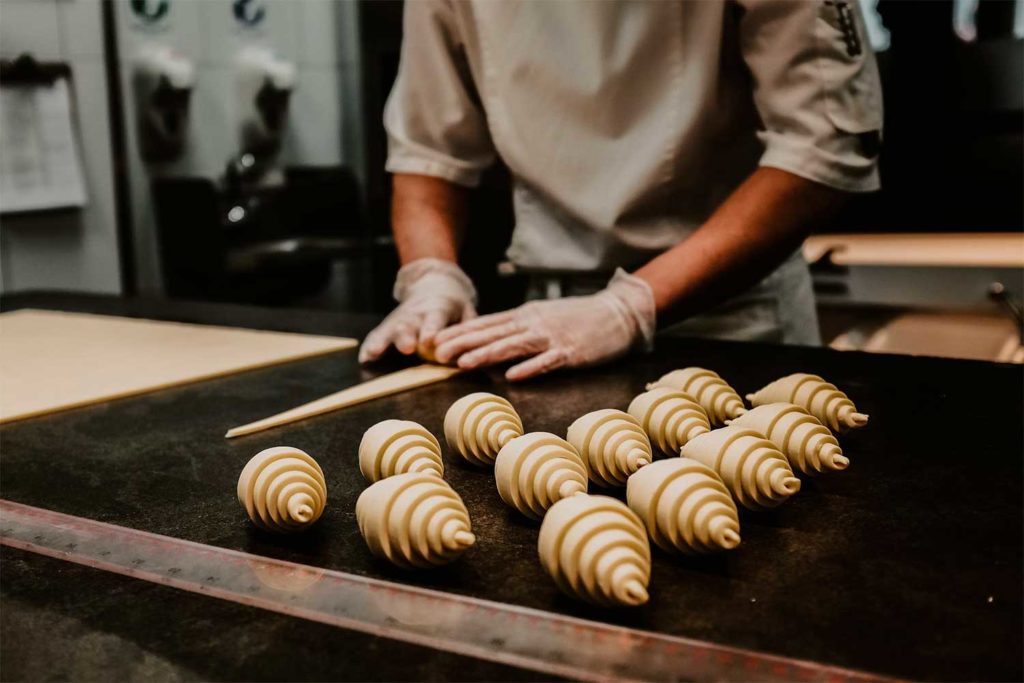The croissant is often linked to France, but its real origins are in Austria. This article traces its journey into French breakfast culture.
Understanding the Real Origins of the Croissant
A Symbol of French Breakfast… Made in Vienna
The croissant is widely known as a symbol of French breakfast. It is served in cafés across Paris, often with butter and jam. Tourists associate it with morning rituals in France. But its real story begins in Austria, not France.
The earliest known ancestor of the croissant is the kipferl, a crescent-shaped pastry from Vienna. It dates back to at least the 13th century, long before it appeared in any French kitchen. The kipferl was not laminated like the croissant we know today. It was denser and made with a simple dough of flour, water, and fat.
The link between Austria and the croissant becomes clearer in the 17th century. During the 1683 Siege of Vienna by the Ottoman Empire, legend says that Viennese bakers created the crescent shape to celebrate the city’s defense against the Turks, whose symbol was a crescent moon. While this story is debated, the shape was clearly rooted in Austrian baking traditions.
So how did this pastry travel from Austria to France?

The Role of August Zang and Paris in the 19th Century
From Vienna to the Rue de Richelieu
The transition happened thanks to August Zang, a retired Austrian artillery officer. In 1839, Zang opened the Boulangerie Viennoise at 92 rue de Richelieu in Paris. He introduced Parisians to Viennese baked goods, including the kipferl.
French bakers were impressed. The techniques and ideas spread across the city. Over time, local bakers began adapting the recipe. They used laminated dough, a method already known in France since the 17th century through pâté feuilletée (puff pastry). By the early 20th century, this method became standard for croissants.
This is when the modern croissant, flaky and buttery, appeared in Parisian bakeries. It was no longer the same as the Austrian kipferl, but the influence remained clear.
The success of the croissant in France owes much to this cultural exchange. However, its popularity also reflected other trends.
Why the Croissant Became a French Staple
Timing, Technique, and Industrialization
By the 1920s, the croissant became a regular item in Paris cafés and boulangeries. Its rise coincided with changes in urban lifestyle. More people were eating outside the home. The café breakfast—coffee and pastry—became common.
The croissant also benefitted from French baking expertise. The laminated dough technique allowed for a soft interior and crispy layers. French butter, with its high fat content (82%), made a difference in texture and flavor.
During the 20th century, the croissant entered mass production. Machines allowed for uniform lamination and shaping. This industrialization reduced costs and made croissants accessible across the country. A typical croissant in France today costs around €1.30 (about £1.10 / \$1.40).
Still, there is a difference between the industrial croissant and the artisan version. In 2023, the French National Institute of Statistics (INSEE) estimated that over 60% of croissants sold in supermarkets were made from frozen dough.
In contrast, artisan bakers often use AOP (Appellation d’Origine Protégée) butter and ferment the dough overnight. The result is a more complex taste and better structure.
Austrian or French? The Debate Over Identity
Culinary Heritage and National Narratives
The croissant is now part of French identity, especially abroad. But its roots are Austrian, and this raises questions about culinary heritage. In 2013, the Austrian Tourism Board launched a campaign reminding visitors that the croissant came from Vienna, not Paris.
The French, meanwhile, focus on the transformation of the croissant in France. Their argument is based on technique and culture. The croissant has changed so much since its Austrian days that it is now a different product.
In culinary terms, this is not unusual. Foods often travel, change, and adapt. The same is true for pizza, curry, and many street foods. The croissant is no exception. Its lamination process, use of French butter, and place in French breakfast culture make it local in a new way.
This dual identity is not negative. It reflects transnational influences that shape food. What matters is not the origin alone but also how a product is used, understood, and reproduced.

The Croissant Today: Global and Varied
From Japan to the US via Paris
Today, the croissant is baked and eaten worldwide. In Japan, bakeries have developed matcha or squid-ink croissants. In the US, the “cronut” (croissant-doughnut hybrid) became a trend in 2013.
These adaptations are not French, nor Austrian, but global. Still, Paris remains the main reference. Visitors often seek an “authentic French croissant,” even though what they find may differ from local artisan versions.
Croissant quality varies. A study by 60 Millions de Consommateurs in 2021 compared industrial vs. artisan croissants. It found that handmade croissants had better scores in taste and digestibility, while supermarket ones were cheaper but often high in additives.
So, is the croissant Austrian or French? Both, depending on how we define identity. Its shape and name are Austrian. Its dough and baking method are French. And its symbolism—the café breakfast, the boulangerie window—is tied to France.
More Than a Pastry
The croissant is not just a French breakfast item, nor only a Viennese pastry. It is a product of historical migration, adaptation, and industrial evolution. Understanding this story allows us to see food not just as a recipe but as a process shaped by place, technique, and people.
Eating a croissant in France today is participating in a culinary heritage that crosses borders. Its story belongs as much to Vienna’s bakers as to French artisans.
Cook in France is your gateway to French cuisine and gastronomy in France. Get in touch for your next cooking workshop.
